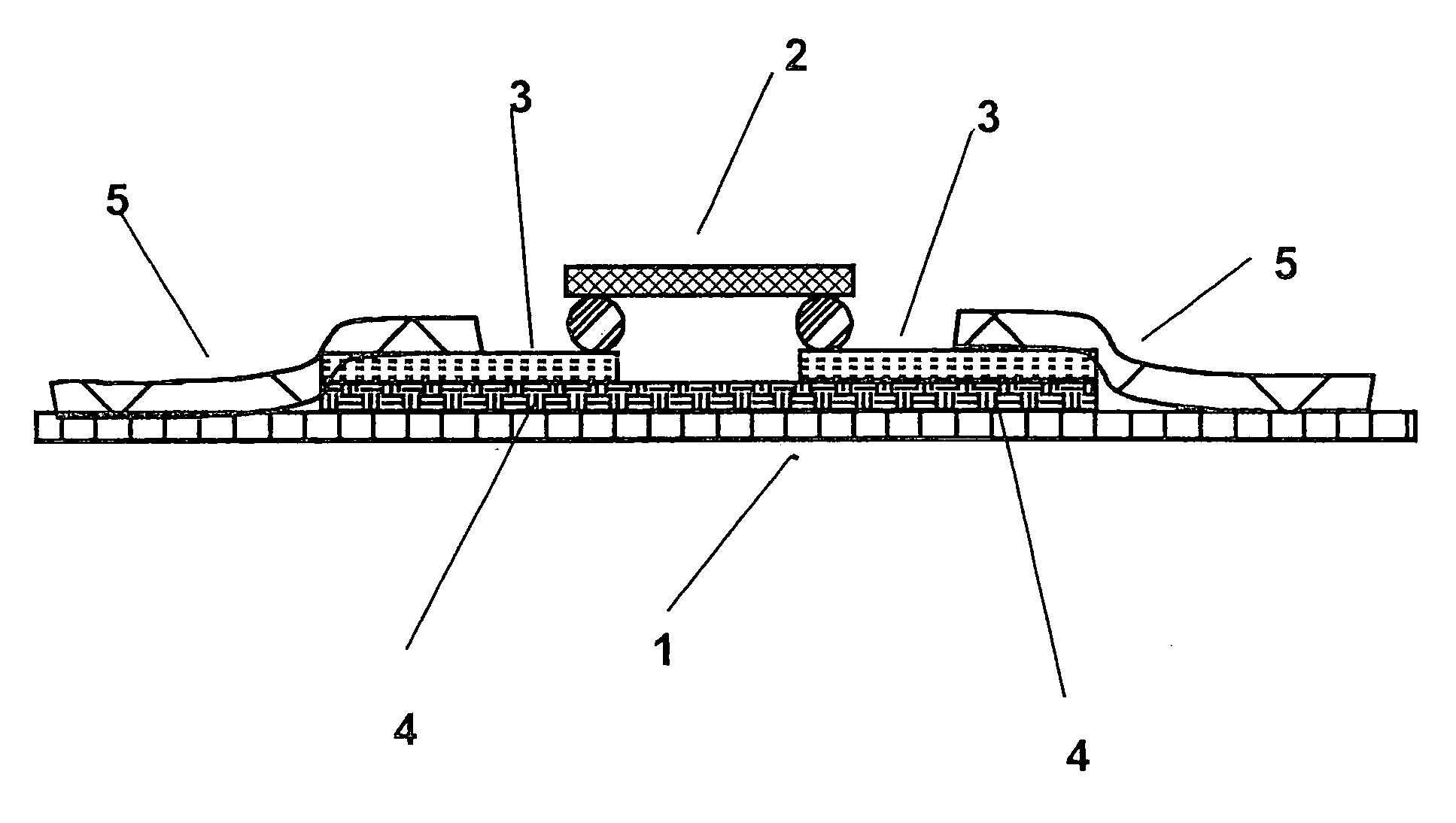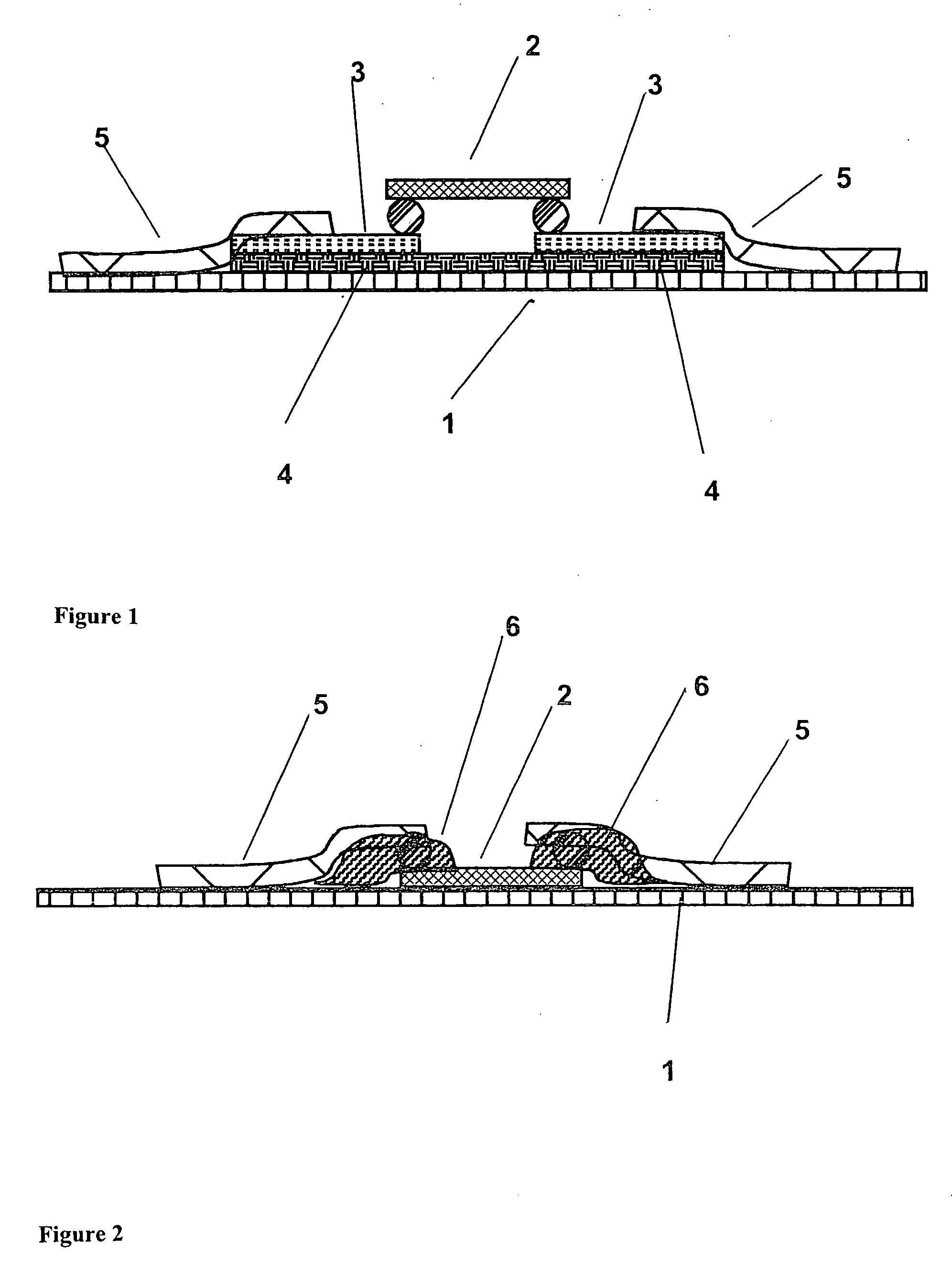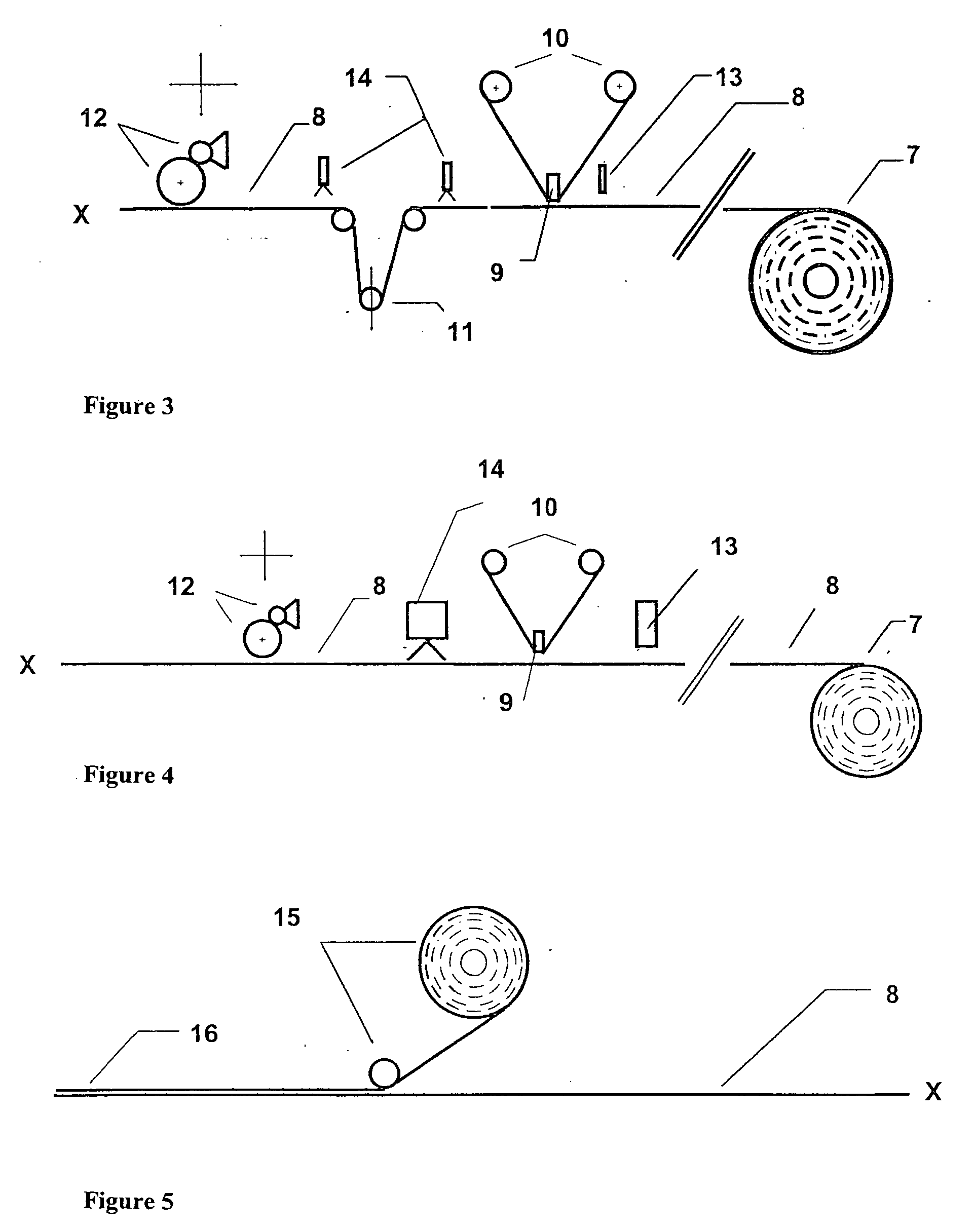Application of electronic components in printed products
a technology of electronic components and printed products, applied in the direction of electrical apparatus casings/cabinets/drawers, semiconductor/solid-state device details, instruments, etc., can solve the problems of complex methods, detuning and output losses of rfid elements or transponders, and the need for very precise positioning of chips or chips and auxiliary carriers, etc., to achieve quick and operationally safe application and connection
- Summary
- Abstract
- Description
- Claims
- Application Information
AI Technical Summary
Benefits of technology
Problems solved by technology
Method used
Image
Examples
Embodiment Construction
[0022]Referring to FIG. 1 of the drawings, an auxiliary carrier 4 is shown that has been fixed on a printing material or material to be printed 1 using a bonding agent or some other suitable method. The auxiliary carrier 4 has conductive contact areas 3 that are in contact with the contact areas of a chip 2. In a second processing step, conductive structures 5, which in this case are components of an antenna of an RFID transponder, have been printed or stamped over the contact areas 3 of the auxiliary carrier 4. It is significant that, in contrast to the typical procedure, the contact areas are located not on the print side, but instead on the side of the auxiliary carrier and chip facing away from the print side in order to allow printing.
[0023]An arrangement of an individual chip (i.e., which is not located on an auxiliary carrier) on material to be printed 1 is shown in FIG. 2. The contacts of the chip 2 can face towards or away from the material to be printed 1. An arrangement i...
PUM
 Login to View More
Login to View More Abstract
Description
Claims
Application Information
 Login to View More
Login to View More - R&D
- Intellectual Property
- Life Sciences
- Materials
- Tech Scout
- Unparalleled Data Quality
- Higher Quality Content
- 60% Fewer Hallucinations
Browse by: Latest US Patents, China's latest patents, Technical Efficacy Thesaurus, Application Domain, Technology Topic, Popular Technical Reports.
© 2025 PatSnap. All rights reserved.Legal|Privacy policy|Modern Slavery Act Transparency Statement|Sitemap|About US| Contact US: help@patsnap.com



